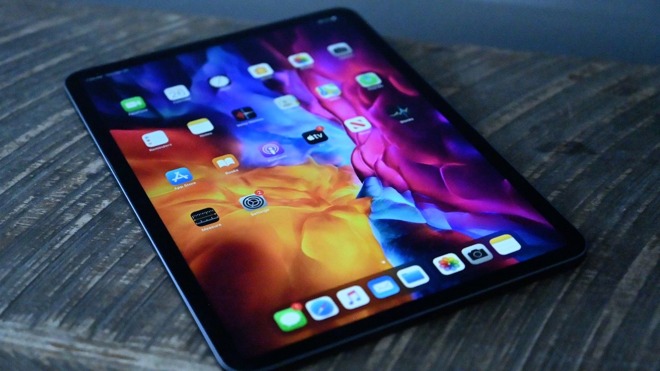LG Display tapped to produce mini LED displays for early 2021 iPad Pro refresh
LG Display is reportedly preparing to supply Apple with mini LED displays in early 2021, potentially for a new lineup of iPad Pro models that could be followed by MacBooks and other iPads.

Credit: Andrew O'Hara, AppleInsider
Past supply chain reports have indicated that LG Display could be the primary supplier of mini LED display panels for an iPad Pro model. Well-connected analyst Ming-Chi Kuo has forecast that the iPad model could be Apple's first to sport the display technology.
The supplier is set to mass produce its mini LED displays for new iPad models starting by the end of 2020, Korea IT News reported. Corroborating previous reports, Epistar and TSMT will be responsible for the production and mounting of mini LEDs, while LG Display will add its LCD panels to the modules and ship the final displays.
Apple's first mini LED iPads are largely expected to debut in the first quarter of 2021, though there are reports that MacBook models could follow suit later in the year. More specifically, a "high-end" MacBook Pro could adopt the tech.
Although reports suggested that Apple could release up to six devices with mini LED displays by the end of 2020, it appears that the coronavirus pandemic has pushed that timeline back.
Compared to current display technology, mini LEDs offer better color reproduction, contrast ratios, and local dimming than conventionally backlit displays. The display industry says that mini LED backlights LCDs are able to provide a screen that comes the closest to reality thus far.
In addition to Apple, LG Display is reportedly in contract to produce mini LED displays for other PC and monitor manufacturers, such as Lenovo and LG Electronics.

Credit: Andrew O'Hara, AppleInsider
Past supply chain reports have indicated that LG Display could be the primary supplier of mini LED display panels for an iPad Pro model. Well-connected analyst Ming-Chi Kuo has forecast that the iPad model could be Apple's first to sport the display technology.
The supplier is set to mass produce its mini LED displays for new iPad models starting by the end of 2020, Korea IT News reported. Corroborating previous reports, Epistar and TSMT will be responsible for the production and mounting of mini LEDs, while LG Display will add its LCD panels to the modules and ship the final displays.
Apple's first mini LED iPads are largely expected to debut in the first quarter of 2021, though there are reports that MacBook models could follow suit later in the year. More specifically, a "high-end" MacBook Pro could adopt the tech.
Although reports suggested that Apple could release up to six devices with mini LED displays by the end of 2020, it appears that the coronavirus pandemic has pushed that timeline back.
Compared to current display technology, mini LEDs offer better color reproduction, contrast ratios, and local dimming than conventionally backlit displays. The display industry says that mini LED backlights LCDs are able to provide a screen that comes the closest to reality thus far.
In addition to Apple, LG Display is reportedly in contract to produce mini LED displays for other PC and monitor manufacturers, such as Lenovo and LG Electronics.

Comments
"The display industry says that mini LED backlights LCDs are able to provide a screen that comes the closest to reality thus far."
Maybe you won't actually want an OLED after MiniLED screens are released.
"Compared to current display technology, mini LEDs offer better color reproduction, contrast ratios, and local dimming than conventionally backlit displays. The display industry says that mini LED backlights LCDs are able to provide a screen that comes the closest to reality thus far."
Although nebulously written, I think the context of the sentences implies miniLED's strengths against other LCD backlighting only, like edge lighting for instance. The statement can't be true vs OLED tech. MiniLED could possibly offer better color reproduction than OLED. Depends on the OEM's color science. But it can't offer greater contrast ratios or local dimming than OLED. MiniLED offers local dimming zones vs OLED dimming (actually turning off) down to the indivdual pixel.
MiniLED also still has that minor FALD blooming issue with which to contend.
tl;dr I don't think that quote references anything other than backlighting tech.
Similar concept:
"Conversely, in FALD displays, each part of the scene can be dimmed or brightened independently, allowing for much greater contrast and visual quality. Right now, FALD technology is the closest that (relatively) less-expensive displays can get to matching the contrast ratios of two other key emerging display technologies: OLED and microLED."
I'm guessing that Apple believes that miniLED will be the equal of OLED in brightness and contrast, as well as being color accurate. I think that you should wait before condemning it.